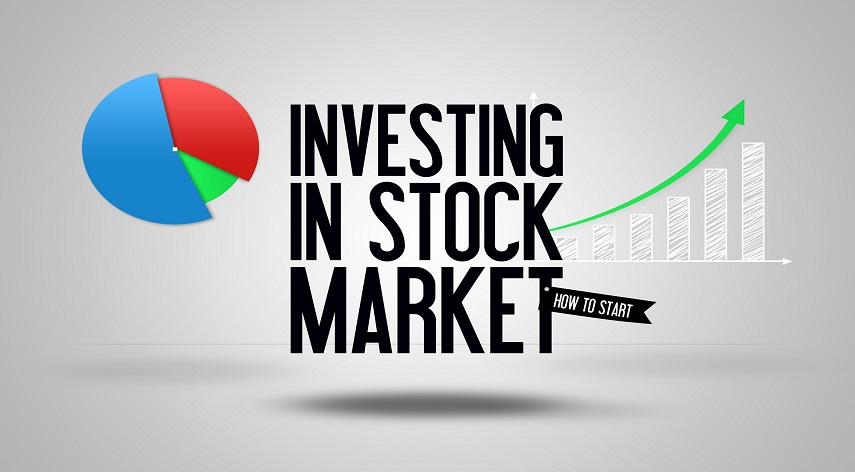How to Start Investing

Did you know that 58 percent of adults in the United States of America choose to invest their money in the stock market? Learning how to start investing might sound daunting at first, but taking it one step at a time will help you find ways to grow your money and hedge against inflation. The hardest part is learning what to invest in and how much of your capital to invest.
While investing in stocks is a more mainstream option, there are other asset classes that you should consider, like real assets and precious metals. The good news is that you’ve found a helpful guide that will teach you how to get into investing and grow your money.
Keep reading this article to learn more today!
Table of Contents
ToggleStart Early
The best thing that you can do when learning how to invest is to start as early as possible. Investing early will allow for more time for your money to grow. You’ll gain the benefit of compound interest when you start investing early, which means that your money will grow at a staggering rate later on in life.
Create an Investment Strategy
You also need to invest time in growing your investment strategy if you want to grow your money in a methodical manner. A great way to start is by setting some investment goals for your future. It’s best to have a group of short-term goals and long-term goals that you’re hoping to reach over the coming months and years.
Be honest with yourself about how much money you’re able to invest in the stock market and other assets. The goals that you set will have an impact on what you invest in and how much of your money you decide to put into these assets.
A good long-term goal would be to save for your retirement or to pay off the mortgage on your home. Some ideal short-term goals that you should pursue are getting out of debt and setting up an emergency savings account.
Check Your Current Finances
Assessing the current state of your finances is also important if you want to learn how to start investing. Take the time to look at how much money you’re making each month and how much you’re spending, and then look for areas where you can cut back on spending money. Doing this will allow you to dedicate more of your money toward investing in stocks.
It’s also important to avoid comparing yourself and your financial situation to that of the people around you. Don’t beat yourself up over any debt that you have in your name.
Instead, look at ways that investments can help you decrease and eliminate those debts. Reading this article on veblen goods will get you pointed in the right direction with your investing strategy.
Find Your Risk Tolerance
Risk tolerance is a big consideration that you should make when you’re investing in stocks and other assets. If you choose to work with a financial advisor when learning how to get into investing then they’ll ask you how much you’re willing to risk.
Having an idea of how you’ll feel if you start losing the money that you’ve invested is key to determining your risk tolerance. Knowing the riskier asset classes is also essential for determining your risk tolerance. Stocks are the riskiest investment that you can make, but they also carry the potential of a large reward.
Diversify Your Investments
It seems like any time that an expert talks about what to invest in you’ll hear them talk about having a diverse portfolio. Investing in a wide array of assets is important because it helps you mitigate the risk of investing your hard-earned money. If you put all of your money into one stock you could quickly find that you’ve lost everything.
It’s impossible to predict the future, and investing in a trendy or hot stock isn’t a sure thing. You’ll find that it doesn’t take long for a new business to show up on the market and capture a large amount of the market share, leaving you with less money than you started with.
Here are some tips for diversifying your investments.
Invest in Different Asset Classes
You need to start investing some of your cash into stocks and bonds in order to hedge your money against economic changes and inflation. Invest in a mix of these assets and look into getting Treasury bonds as a way to make your cash go even further.
Buy Stocks in Different Industries
Stocks offer the greatest potential returns, but you can still mitigate risk by investing in stocks across a number of different industries. The more businesses that you purchase stock shares in, the more protected you’ll be if changes occur in the financial market. Even if some stocks drop in value, others will hold in place or increase.
Invest in Mutual Funds
Mutual funds are another great option if you’re looking at what to invest in to diversify your holdings. You don’t need to put as much time into researching mutual funds in order to have success with investing. It’s an easy way to get into investing with minimal effort.
Be Patient
Many people make the mistake of expecting immediate returns from their investments. The best investors keep their emotions in check and remain patient as their money starts growing. Unexpected events are going to happen in the world, but the best investors know how to keep a level-headed perspective on things.
Don’t make reactionary decisions based on what is happening. Remain patient and let things play out before you decide what to do with your investments.
Now You Know How to Start Investing
The hardest part of learning how to start investing is understanding what to invest in and when to get started with making your investments. The sooner you start investing, the quicker your wealth will start growing, and the sooner you’ll reach the goals that you’ve set. You need to remain patient and look at ways to diversify your investments in the stock market.
For more helpful and encouraging content like this article, make sure you explore the rest of our website today!
Alfred Williams, a distinguished business writer, navigates the corporate landscape with finesse. His articles offer invaluable insights into the dynamic world of business. Alfred's expertise shines, providing readers with a trustworthy guide through the complexities of modern commerce.
Recommended For You
Spread the loveIn the ever-expanding digital landscape, online trading platforms have become a staple for savvy consumers looking to explore
Spread the loveHave you heard about fiat-to-crypto exchange? One area that continually captures the attention of both seasoned investors and
Spread the loveMuch like any skill you master, financial stability sometimes requires a bit of practice. In the world of





